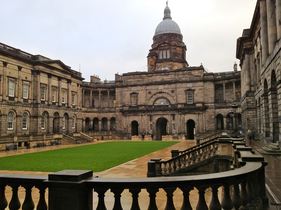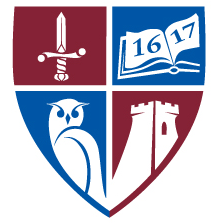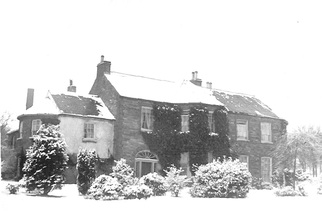 University of Edinburgh
University of Edinburgh Davie went to Galway College with a scholarship. He got his B.A. there, but his last year was full of mischievous pranks. One of these concerned a distant relation of his, a lecturer at the College. Davie heard that he had just succeeded in becoming engaged to a lady who had been unable to make up her mind. Accordingly, Davie sent a wire to his grandmother in Derry.
It read: “I am a happy man Margaret has at last accepted me."
It bore the lecturer's signature. Grannie, delighted in being promptly informed of this long-awaited event, sent her warmest congratulations. Mentioning Bruce and the Spider, she praised his perseverance which gained for him dear Margaret’s hand. In spite of his innocent face Davie was suspected almost at once.
In addition to such pranks, he played rugger enthusiastically and with ability. He worked harder at that than at his studies, and consequently, he lost his scholarship. As Davie’s father was no longer alive (he died in Bordighera, Italy in 1901 of sprue, contracted during his service in India), his Uncle Sam was responsible for his upbringing. He might have been expected to be angry at this news about the scholarship, but his only comment was: “Davie is alright, he just did not mind his books.” However, he thought it better to take him away from Galway and to send him to Edinburgh.
This was a wise move. After the death of her husband in 1910, Mrs. Campbell had set up home there. It was the only time she could have the whole family with her. Under her stern supervision Davie, even though he still played rugger, and in fact, got his ‘Blue’, got down to work. The result of this was a M.A. (Hons.) degree in Mathematics. After this he decided on medicine like his elder brother Boyd, who, by the way, is a Rugger International.
Davie was a good all-round sportsman in spite of a permanent injury to his left hand, caused by a boyish escapade. This happened while he was still at Foyle for schooling. One day, Tom, Boyd, and Davie played truant from school and went to watch a game of rugger. To get back to school in time, they climbed a wall which had glass on top to prevent people from climbing over. Davie cut his hand badly, but did not show it to the headmaster, and it was not dressed until that evening. The tendon was damaged and gradually the finger began to draw in. This remained a handicap for life. However, he never allowed this to interfere with his skill at games. No one was better at catching a cricket ball in Dar-es-Salaam in the thirties, nor was there a better scrum-half. He was equally good at casting a line over a trout in the Kenya Highlands, or skiing on the snowy Tyrolean slopes in Austria.


 RSS Feed
RSS Feed